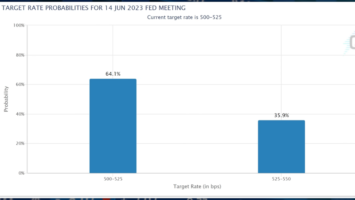As we witness the final stages of the global chip shortage, which had caused a significant slowdown in various industries, investors are keenly examining the potential of key players in the semiconductor industry. Two major contenders to consider are Intel and Advanced Micro Devices (AMD), both of which hold significant market shares. This article will provide a comprehensive analysis of the potential investment opportunities in these companies as the chip shortage concludes.
Analyzing the Potential of Intel and AMD Investments Post-Chip Slowdown

Intel and AMD, being significant players in the chip manufacturing industry, have had their fair share of ups and downs during the chip shortage. However, as the slowdown concludes, their strategic moves and market positioning dictate a potential windfall for investors. Intel, with its new foundry services and emphasis on innovation, offers a promising outlook. Recently, Intel announced plans to invest $20 billion in two new chip plants in Arizona, signaling robust growth prospects.
On the other hand, AMD, despite being relatively smaller than Intel, has made significant strides in the market. It has managed to increase its market share in the central processing unit (CPU) market, primarily at the expense of Intel. This shows AMD’s ability to seize opportunities in challenging times. Moreover, their recent acquisition of Xilinx, a pioneer in the field of programmable logic devices, has strengthened AMD’s portfolio and is likely to provide a competitive edge.
A Comprehensive Assessment of Intel vs AMD: Opportunities in a Post-Chip Shortage Market
Taking a broader view of both companies, it’s clear that each comes with its own set of investment opportunities and risks. Intel’s new CEO, Pat Gelsinger, has put forward an aggressive plan to regain its lost ground in the CPU market and diversify its business into chip manufacturing. This plan, if successful, could result in substantial growth for Intel. However, execution risks remain, and the benefits are likely to be realized in the long term.
AMD, meanwhile, looks to ride the momentum it has generated over the past few years. The company’s focus on high-performance computing and graphic chips, coupled with its successful execution of growth strategies, have led to a steep rise in its stock price. However, the company’s high valuation and competition from not just Intel but also Nvidia in the graphics chip market pose potential investment risks.
In conclusion, both Intel and AMD present compelling investment opportunities as the chip slowdown concludes. Intel’s strategic shift toward chip manufacturing and plans for innovation, along with AMD’s impressive market share growth and successful growth strategies, make them both attractive options for investors. However, potential investors need to weigh the long-term benefits against the inherent risks involved in investing in this highly competitive market. With comprehensive research and insightful understanding, the post-chip slowdown market offers promising prospects in the semiconductor industry.
Ainu Token aims to offer impartial and trustworthy information on cryptocurrency, finance, trading, and shares. However, we don't provide financial advice and recommend users to conduct their own studies and thorough checks.



Comments (No)